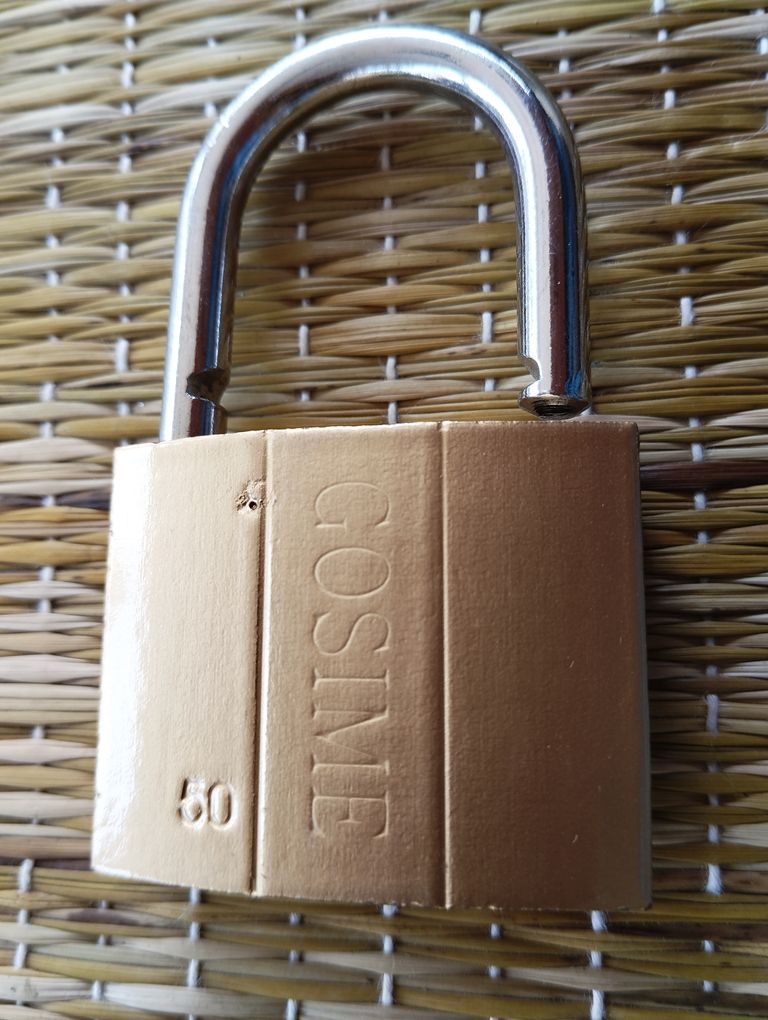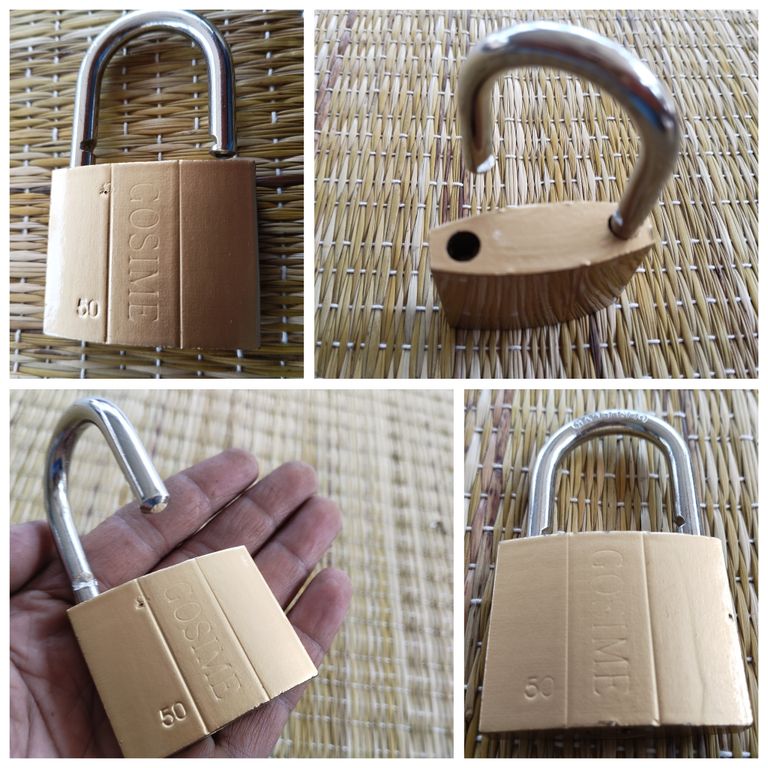
Here's a blog on precautions for locking your home to ensure security. Let me know if you'd like any changes or additions.
Top Tips for Locking Your Home: Precautions for Better Security.
Ensuring the security of your home starts with something as basic yet vital as locking your doors. Though it may seem simple, paying careful attention to how and when you lock your home can significantly reduce the risk of theft or unauthorized access. Let’s explore the most effective steps you can take to improve your home security and give you peace of mind.
- Choose Quality Locks for Doors and Windows
One of the most critical steps in home security is investing in high-quality locks. Modern locks, such as deadbolts, smart locks, and keyless entry systems, offer enhanced protection compared to standard locks. Consider these options:
Deadbolts: Deadbolts offer an added layer of security as they require a key or code to unlock. A double-cylinder deadbolt (which requires a key on both sides) is particularly secure but may need additional caution, as it could hinder escape during emergencies.
Smart Locks: These locks allow you to lock and unlock doors through an app, which adds convenience and control. Many smart locks come with tamper alerts and allow you to give temporary access to trusted individuals.
Window Locks: Many burglars gain entry through unlocked windows. Equip your windows with sturdy locks and ensure they are engaged whenever you’re out or during the night.
- Regularly Inspect and Maintain Locks
Locks can wear down or become damaged over time, making them less effective. Regularly inspect all locks in your home to ensure they’re functioning correctly. Here’s what to look for:
Check for rust or any visible damage.
Test the lock by turning the key several times to ensure smooth operation.
If a lock becomes sticky or difficult to turn, try lubricating it with a silicone-based lubricant.
Replace locks if they appear worn out or if you’ve recently moved into a new home to ensure only you have access.
- Use Deadbolts and Chain Locks on Front Doors
For maximum security on main doors, install both deadbolts and chain locks. Chain locks allow you to partially open the door, providing an added layer of protection when you’re speaking to someone at the door. Remember:
Chain locks are not enough on their own but offer extra support.
Ensure that your main door has both an interior deadbolt and a chain lock for greater safety.
- Always Lock Your Doors and Windows Before Leaving
Whether you’re going for a short errand or an extended holiday, always lock every entry point before leaving. This is a habit worth instilling not only in adults but also in children, as they might sometimes forget to lock up. Make it a habit to double-check locks:
Even if you’re going out just for a few minutes, check that all doors and windows are secure.
If possible, keep a checklist near the door or set reminders on your phone to ensure that everything is locked up.
- Avoid Hiding Keys Outside
One common mistake is hiding a spare key outside. While it might be convenient, hiding keys in obvious places like under the doormat, in flower pots, or in fake rocks can compromise your security. Instead:
Give a spare key to a trusted neighbor or friend.
Invest in a lockbox for keys if you need to leave one outside in an emergency.
Use a keyless entry system if possible, as it removes the need to hide a key entirely.
- Install Security Systems and Alarms
Modern security systems can be a significant deterrent for potential intruders. Alarms that sound off when someone tries to break in can alert neighbors or security personnel. Some points to consider:
Use systems with motion sensors and camera monitoring for real-time security.
Set up mobile alerts so you can check on your property remotely.
If a full security system isn’t feasible, consider smaller devices like door and window sensors that alert you when opened.
- Illuminate Entry Points at Night
Darkness provides cover for intruders, making well-lit entry points a deterrent. Install outdoor lighting near your front and back doors, windows, and any other potential entry points. Motion-detecting lights are particularly effective, as they turn on when someone approaches:
Choose lights with motion sensors to conserve energy.
Install lights with timers to create the impression that someone is home.
Place lights near any doors or windows that may provide easy entry.
- Use Smart Home Technology for Enhanced Control
Smart home technology allows you to control your locks, alarms, and even lights from anywhere. This can provide an added layer of security if you forget to lock up or if you need to monitor your property remotely. Smart home technology includes:
Smart locks that can be controlled via a mobile app.
Smart doorbells with video and audio feeds so you can see who’s at your door.
Remote monitoring of lights and alarms to create the appearance of occupancy.
- Develop Good Security Habits
Good habits can significantly enhance the safety of your home. Start with small actions, and over time, they’ll become second nature:
Lock doors and windows every night before going to bed.
Keep valuables out of view from windows, as they can attract burglars.
Regularly review your home’s security setup and make improvements as needed.
- Get to Know Your Neighbors
A trustworthy neighbor can be an invaluable asset in home security. Having neighbors who look out for each other’s properties creates a more secure community. Encourage neighborhood cooperation:
Participate in community watch programs if available.
Keep an eye on each other’s homes when someone is away.
Exchange contact information with neighbors for emergencies.
Securing your home is a commitment that goes beyond just locking doors. By investing in quality locks, using smart technology, and developing good security habits, you can protect your home and loved ones more effectively. Remember, a secure home is a peaceful home.
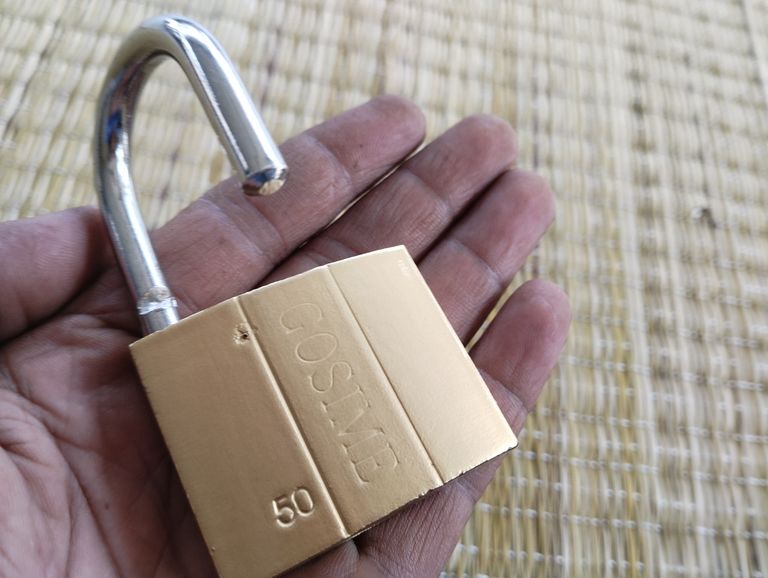
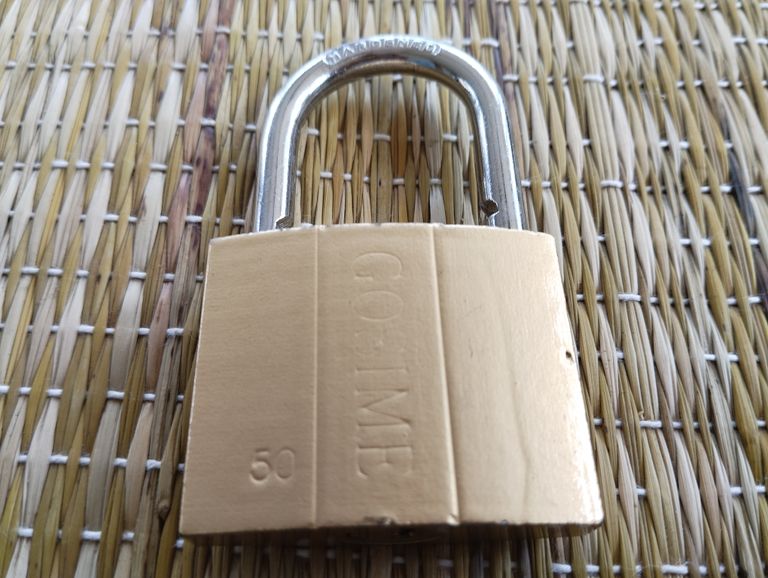
Here's a blog post on "How to Open a Lock Without a Key."
How to Open a Lock Without a Key
Losing or forgetting your keys can be a frustrating experience, especially if you need immediate access to something important. However, there are several methods you can try to open a lock without a key. Remember, these techniques should only be used on locks you own or have permission to open.
- Using a Bobby Pin or Paperclip
One of the most popular ways to pick a lock is by using a bobby pin or paperclip. Here’s how:
Step 1: Straighten out a bobby pin or a paperclip, creating a slight bend at one end.
Step 2: Insert the bent end of the pin or clip into the lock’s keyhole.
Step 3: Apply slight pressure, twisting as if you were using a key.
Step 4: Use a second bobby pin or paperclip to feel for the pins inside the lock and push them up individually.
This process can take some time and patience, as you’ll need to lift each pin until it aligns correctly and the lock clicks open. This technique generally works on pin tumbler locks, which are common in padlocks and basic home door locks.
- Using a Flathead Screwdriver
If you have a small, thin flathead screwdriver, it can serve as a makeshift key. This method can be effective on basic locks or padlocks:
Step 1: Insert the flathead screwdriver into the keyhole.
Step 2: Wiggle and twist it back and forth to apply pressure.
Step 3: Gradually increase the twisting force until the lock opens.
This technique works well with older locks or those that may be worn down over time. However, it may not be effective on modern or high-security locks, as they are designed to resist such methods.
- Using a Tension Wrench and a Pick
Professional locksmiths use this technique, and it requires specialized tools. However, if you have access to a tension wrench and pick, this method is one of the most effective:
Step 1: Insert the tension wrench into the bottom of the keyhole.
Step 2: Apply gentle pressure in the direction you would turn a key.
Step 3: Use the pick to lift each pin inside the lock until they are all aligned.
Step 4: Continue applying pressure with the tension wrench as you lift the pins.
With all pins aligned, the lock should turn and open. This technique can require practice, so be patient if it doesn’t work immediately.
- Bumping the Lock
Another effective method for opening a lock without a key is “lock bumping.” It’s a technique often used by locksmiths and requires a special “bump key”:
Step 1: Insert the bump key into the lock, pushing it in all the way.
Step 2: Apply slight turning pressure as if you’re trying to unlock it.
Step 3: Using a small tool, like a rubber mallet, tap the end of the bump key lightly.
Step 4: Repeat this process until you feel the lock turn and release.
Lock bumping requires precision and isn’t effective on all types of locks. Also, bump keys are not readily available, and this technique should be used responsibly.
- Using a Plastic Card
This method only works on spring locks, like those commonly found on interior doors:
Step 1: Use a flexible plastic card, such as an old gift or loyalty card.
Step 2: Insert the card between the door and the door frame where the lock is located.
Step 3: Wiggle the card up and down while applying pressure towards the lock.
Step 4: Push until the latch retracts, and you can open the door.
This technique doesn’t work on deadbolts but can be effective on many spring locks.
- Using a Hammer
If the lock or padlock is inexpensive and you have no other option, a hammer might work to force it open:
Step 1: Place the lock on a hard surface.
Step 2: Hit the lock near the shackle with a strong, forceful blow.
Step 3: Continue until the lock breaks or releases.
This method can damage the lock or surrounding area, so it’s best to use it as a last resort and only on your property.
Safety and Legal Considerations
Always consider the safety and legality of attempting to unlock a lock without a key. Picking a lock without permission may be illegal in some areas, and damaging a lock can also incur expenses for replacement. When in doubt, contact a licensed locksmith, as they can open most locks safely and legally.
Conclusion
Knowing how to open a lock without a key can be helpful in emergencies. With tools as simple as a bobby pin or plastic card, you can potentially unlock a door, padlock, or other mechanisms without damaging them. Always use these techniques responsibly and respect the property of others. If you’re in a difficult situation and unsure, calling a professional locksmith is often the best course of action.
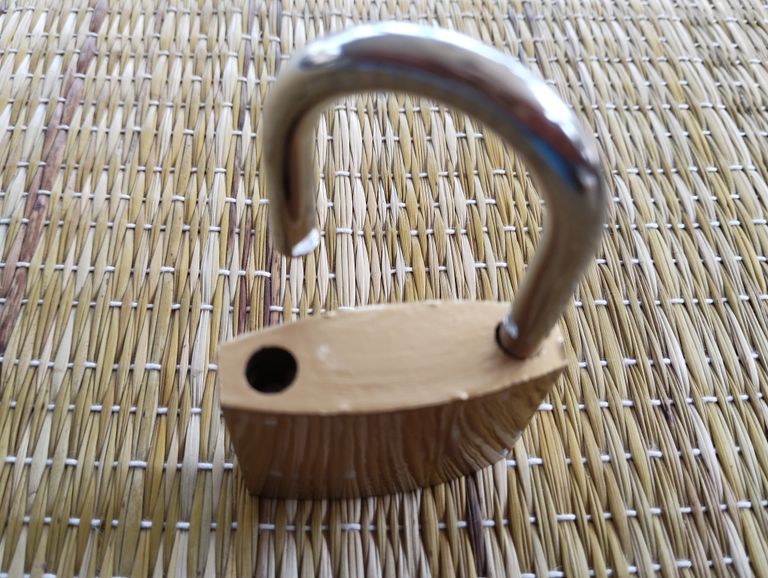
Here's a blog on "How Locks Are Made," which explains the intricate process in about 4000 words:
How Locks Are Made: A Detailed Look at the Craft of Lockmaking
Locks have been used by humans for thousands of years as a means to protect possessions and ensure privacy. From ancient wooden mechanisms to today’s high-tech electronic locks, the art of lockmaking has evolved dramatically. In this blog, we’ll explore the entire process of making a traditional mechanical lock, focusing on the types, materials, and step-by-step processes that bring these essential devices to life.
- A Brief History of Locks
The concept of locking mechanisms dates back to around 4000 BCE in ancient Egypt and Babylon. The earliest locks were wooden, featuring a pin tumbler design that was later refined and replaced by metal locks around 870-900 CE in England. These metal locks became the forerunners of the sophisticated lock systems used today, which include not only mechanical but also electronic and smart locks.
- Types of Locks
Locks come in various types, each designed for a different purpose:
Padlocks: Portable and versatile, often used for doors, lockers, and bicycles.
Deadbolt Locks: Known for their strength, commonly used on external doors.
Combination Locks: Require a sequence of numbers to open; commonly used for safes and lockers.
Cylinder Locks: A key-operated lock often found on doors, using a pin-tumbler mechanism.
Smart Locks: Operate electronically and can be controlled remotely, often through a mobile app.
- Materials Used in Lockmaking
Modern locks are made from robust materials designed to withstand pressure, weather, and tampering. Common materials include:
Brass: Resistant to rust and corrosion, often used for the cylinder and keys.
Steel: Known for its strength, it’s commonly used in parts like the bolt and internal mechanisms.
Zinc Alloy: Durable and lightweight, commonly used in padlocks.
Plastic: Used mainly in electronic and smart locks for lightweight parts.
- The Manufacturing Process
The production of a lock involves several stages, combining metalworking, assembly, and quality testing to ensure durability and reliability. Here’s a step-by-step breakdown of how a standard pin-tumbler lock is made:
Step 1: Designing the Lock
Engineers design each lock based on its intended function, security level, and aesthetic appeal. CAD (Computer-Aided Design) software is often used to create a precise blueprint. This design includes specifications for each component, such as the cylinder, pins, springs, and housing.
Step 2: Preparing the Raw Materials
The required metals (typically brass or steel) are cut and shaped according to the design. Sheets or rods of these materials are selected for their specific qualities, such as strength and corrosion resistance.
Step 3: Machining the Cylinder and Housing
Cylinder Creation: The cylinder, or the part where the key is inserted, is produced by a CNC (Computer Numerical Control) machine. This process ensures accuracy and consistency, as each cylinder must fit precisely within the lock body.
Housing Shaping: The outer housing, often made of brass or steel, is also created through machining. The housing holds all internal components and protects them from tampering.
Step 4: Cutting the Pins and Springs
Pins and springs play a critical role in the lock’s mechanism, especially in pin-tumbler locks. Each pin is cut to a specific length based on the design specifications, which will align with the key cuts to either lock or unlock the cylinder. Springs are added to push the pins into place and reset them once the key is removed.
Step 5: Key Cutting
The key is another precision component, as its cuts must align with the pins inside the cylinder. Key blanks are cut using a specialized machine that engraves each unique pattern. Advanced keys might use laser cutting to ensure even more precision.
Step 6: Assembly of the Lock Mechanism
During assembly, each component is placed within the housing:
Cylinder and Plug Assembly: The cylinder is inserted into the plug, with pins and springs positioned inside.
Pin and Spring Placement: Each pin is inserted into a specific chamber in the cylinder. Springs are added to keep the pins in the correct position.
Securing the Housing: The housing is sealed to prevent tampering, and screws or rivets may be added for extra security.
Step 7: Quality Control and Testing
Quality control is essential to ensure that each lock operates smoothly and securely. Common tests include:
Durability Testing: Locks are subjected to stress and impact tests to ensure they can withstand wear.
Key Fit Testing: Keys are tested in the cylinder to make sure they operate smoothly.
Tamper Resistance Testing: To prevent unauthorized entry, locks are tested against common lock-picking and bumping techniques.
- Advanced Lock Mechanisms
While traditional locks are still widely used, advancements in technology have introduced more sophisticated mechanisms:
Biometric Locks: Use fingerprints or facial recognition for access.
Digital Keypad Locks: Require a numeric code, eliminating the need for physical keys.
RFID Locks: Often found in hotels, these locks use radio frequency identification cards for access.
- Environmental Considerations
With the growing emphasis on sustainability, manufacturers are focusing on eco-friendly materials and processes. Many companies are reducing waste by recycling metals and using biodegradable lubricants. Smart locks, with their longer lifespan, also contribute to sustainability by reducing the need for replacements.
- Future of Lockmaking
The future of lockmaking is likely to include even more technology, with trends such as voice-activated locks and IoT-enabled devices that integrate with smart home systems. Cybersecurity will also be a critical consideration as more locks become connected to the internet.
Conclusion
The process of lockmaking combines age-old mechanical principles with modern technology to create secure, reliable devices. From raw materials to advanced digital systems, every lock is the result of precision engineering and rigorous testing. Whether it's the lock on your front door or a sophisticated biometric scanner, each one serves as a testament to the craft of lockmaking and the ongoing innovation in the field of security.
This blog should provide a comprehensive overview of the intricate process behind making locks, from materials to modern innovations in security.
